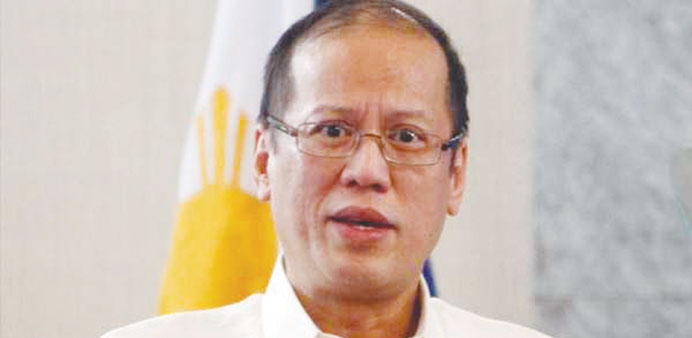|
President Benigno Aquino will be remembered not for what he did in the first two years of his presidency when he could do no wrong, but for the actions he took in the face of crises and disasters. |
It has been a difficult year for the president, as he himself admitted when central Visayas was battered by the most powerful typhoon in Philippine history. After all, the crises, man-made and natural, that struck the country were no small ones.
These include the Sabah incident when hundreds of followers of the late Sulu Sultan Jamalul Kiram 3rd occupied Lahad Datu town in Sabah, Malaysia, the shooting of a Chinese fisherman by personnel of the Philippine Navy, the 7.2-magnitude earthquake that hit the provinces of Cebu and Bohol, Super Typhoon Yolanda and the Zamboanga incident.
The government was greatly criticised for they way it handled each of the crises.
The president was faulted for refusing to heed the sultanate’s call for the government to look into their claim on Sabah and threatening to arrest Kiram and his followers. Several Filipinos were killed when Malaysian security forces went after the intruders led by the sultan’s younger brother, Agbimuddin Kiram.
Aquino’s handling of the Zamboanga incident also drew criticism. Interior Secretary Manuel Roxas, Defence Secretary Voltaire Gazmin and Armed Forces Chief General Emmanuel Bautista were dispatched to the city to manage the crisis but the situation worsened when other radical groups, including the Abu Sayyaf and Bangsamoro Islamic Freedom Fighters, joined the fray.
On September 13, Aquino went to Zamboanga to raise public morale and send a clear message to the Moro National Liberation Front (MNLF) that he is in control. The president preferred to use force against Misuari’s group rather than negotiate peacefully.
Observers were quick to point out that Aquino’s militarist solution to the Zamboanga crisis and his handling of the Sabah issue resulted in the killing of many Filipinos.
Aquino was also condemned on foreign soil, especially in Taiwan and China for his obstinate refusal to apologise for the killing of Chinese tourists during a hostage-taking incident in Luneta in 2010, and over the killing of a Taiwanese fisherman in Balintang Channel.
When the president opted to push through with his scheduled state visit to South Korea after central Visayas was hit by a powerful temblor in October, he was censured for giving more importance to his visit over the welfare of the quake victims.
But the most severe criticisms rained on Aquino after huge areas in Visayas were ravaged by Super Typhoon Yolanda. When news that hundreds of typhoon victims were starving came out, the government was castigated for its slow response.
The president was also hit for blaming local officials in Tacloban for the high death toll, saying that they were ill-prepared for the typhoon.
The government’s inaction on the record power rate hike imposed by the Manila Electric Co (Meralco), which was allowed by the Energy Regulatory Commission drew the ire of various groups.
Aquino himself admitted that he cannot stop the rate increase, prompting several personalities to question the power rate hike at the Supreme Court.
To show that he had no hand in the pork barrel scam that rocked the Senate and House of Representatives, the president also delivered two “major” speeches — one to defend the controversial Priority Development Assistance Fund and the mysterious Disbursement Acceleration Programme, and another to declare that he is not a thief.

